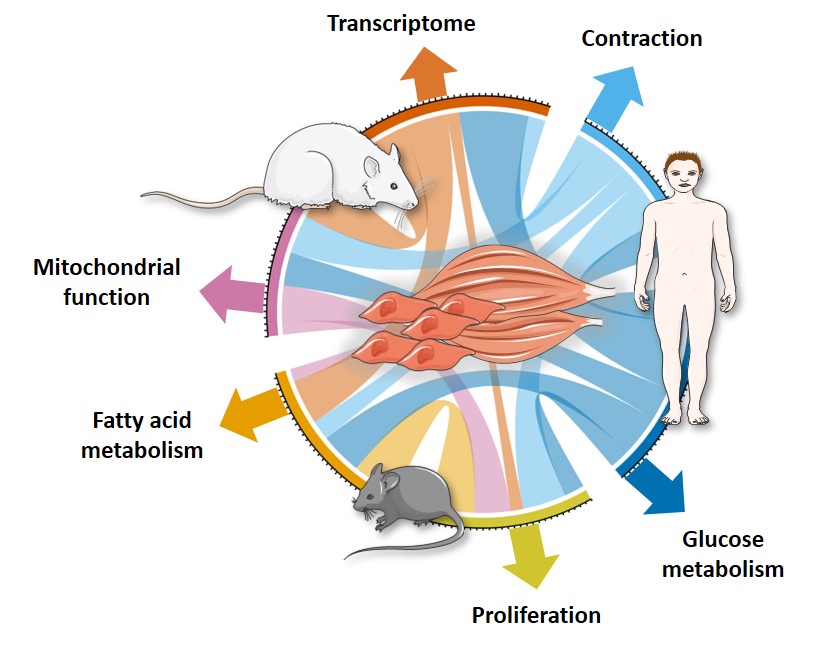Comparative profiling of skeletal muscle models reveals heterogeneity of transcriptome and metabolism
Ahmed M. Abdelmoez, Laura Sardón Puig, Jonathon AB. Smith, Brendan M. Gabriel, Mladen Savikj, Lucile Dollet, Alexander V. Chibalin, Anna Krook, Juleen R. Zierath and Nicolas J. Pillon. December 11th, 2019
Publication: https://doi.org/10.1152/ajpcell.00540.2019
Web app: https://nicopillon.com/tools/muscle-models-profiling/
Supplemental dataset: https://doi.org/10.5281/zenodo.1246757
Rat L6, mouse C2C12 and primary human skeletal muscle cells (HSMC) are commonly used to study biological processes in skeletal muscle and experimental data on these models is abundant. However, consistently matched experimental data are scarce and comparisons between the different cell-types and adult tissue are problematic. We hypothesized that metabolic differences between these cellular models may be reflected at the mRNA level. Publicly available data were used to profile mRNA levels in myotubes and skeletal muscle tissues. L6, C2C12 and HSMC myotubes were assessed for proliferation, glucose uptake, glycogen synthesis, mitochondrial activity, and substrate oxidation, as well as the response to in vitro contraction. Transcriptomic profiling revealed that mRNA of genes coding for actin and myosin were more abundant in C2C12, whereas L6 myotubes had the highest levels of glucose transporters and genes encoding the five complexes of the mitochondrial electron transport chain. Consistently, insulin-stimulated glucose uptake and oxidative capacity were greatest in L6 myotubes. Insulin-induced glycogen synthesis was highest in HSMC, but C2C12 myotubes had higher baseline glucose oxidation. All models responded to electrical pulse stimulation-induced glucose uptake and gene expression but in a slightly different manner. Our analysis reveals a great degree of heterogeneity in the transcriptomic and metabolic profiles of L6, C2C12 or primary human myotubes. Based on these distinct signatures, we provide recommendations for the appropriate use of these models depending on scientific hypotheses and biological relevance.
